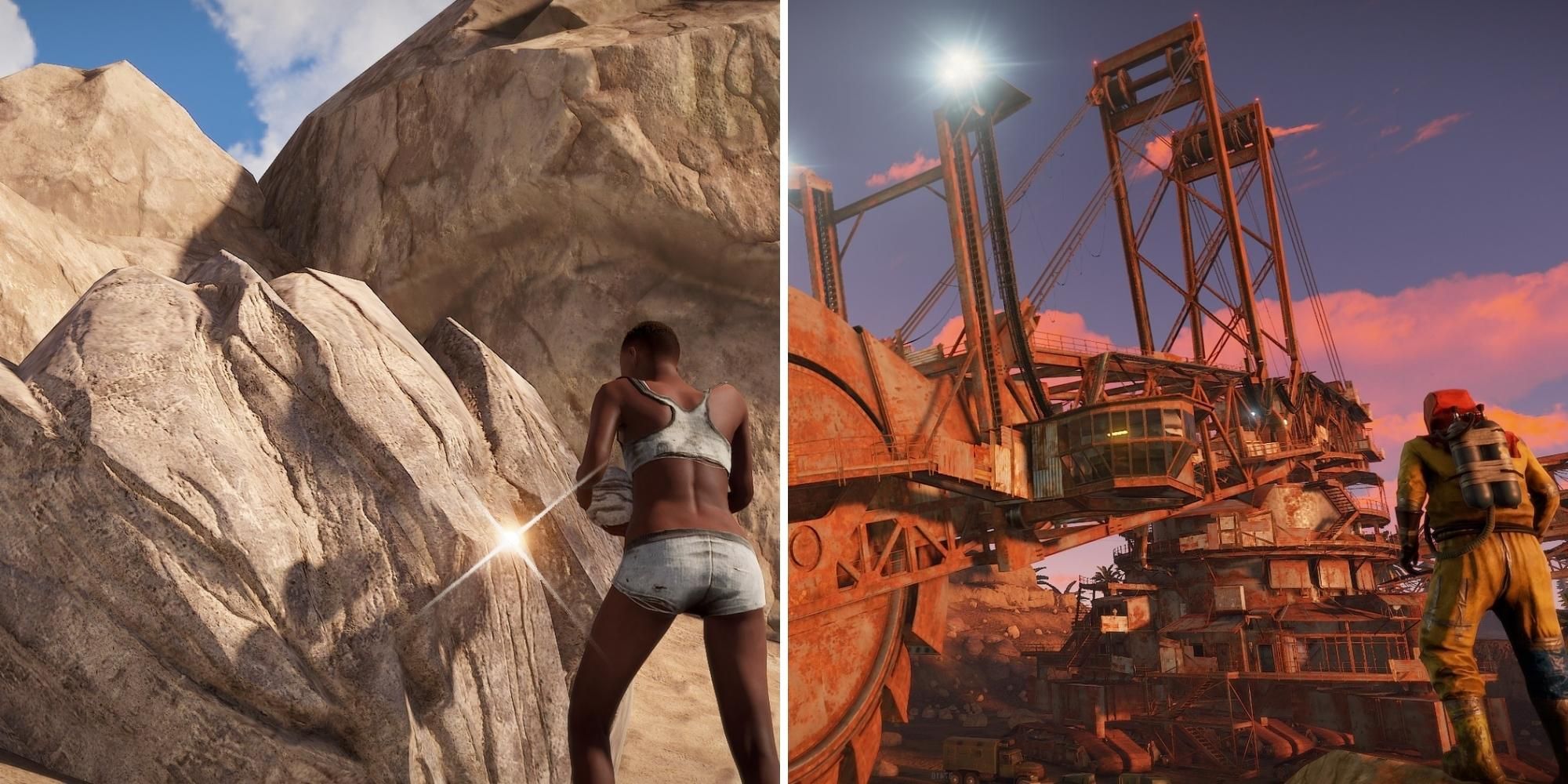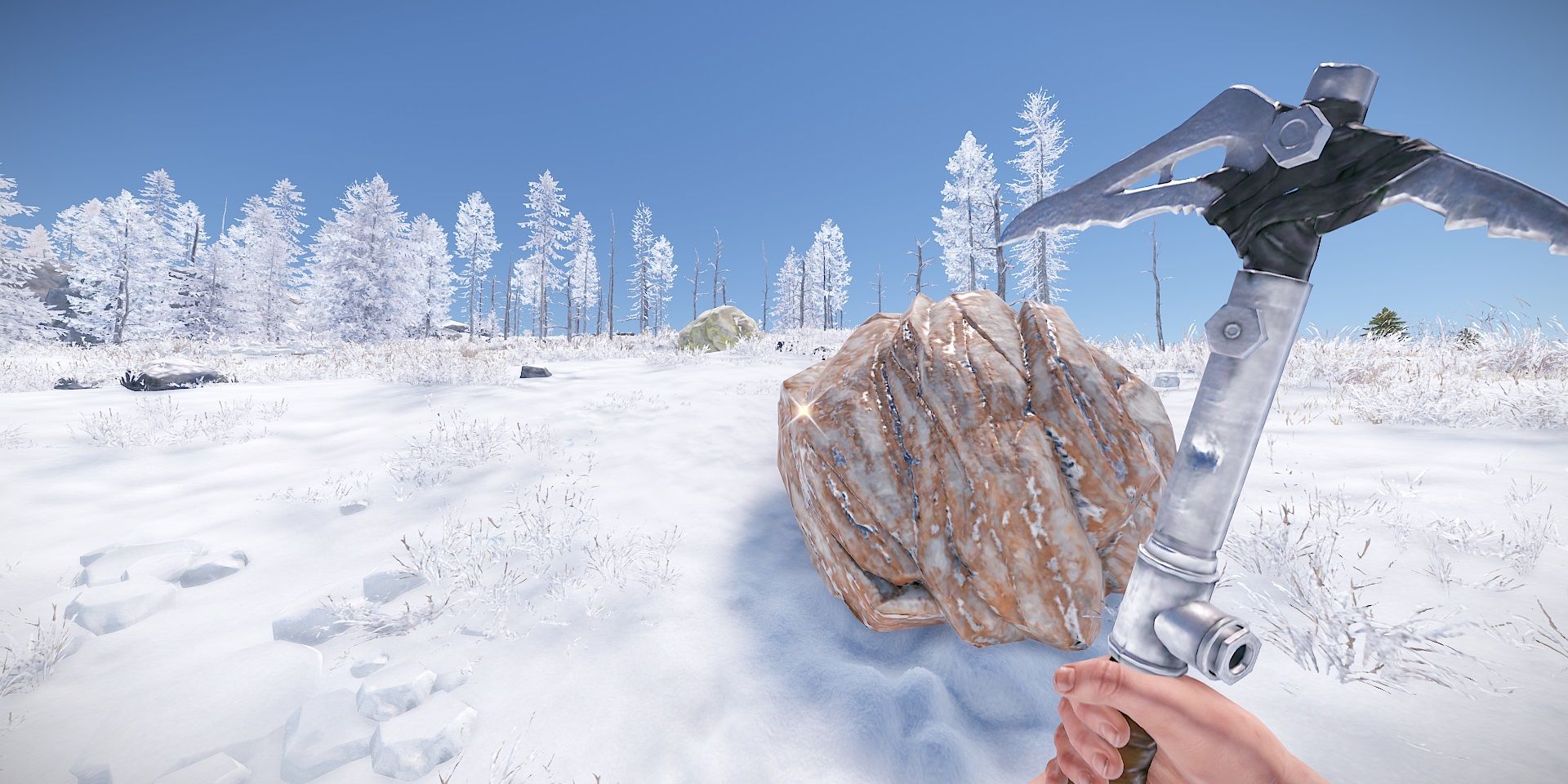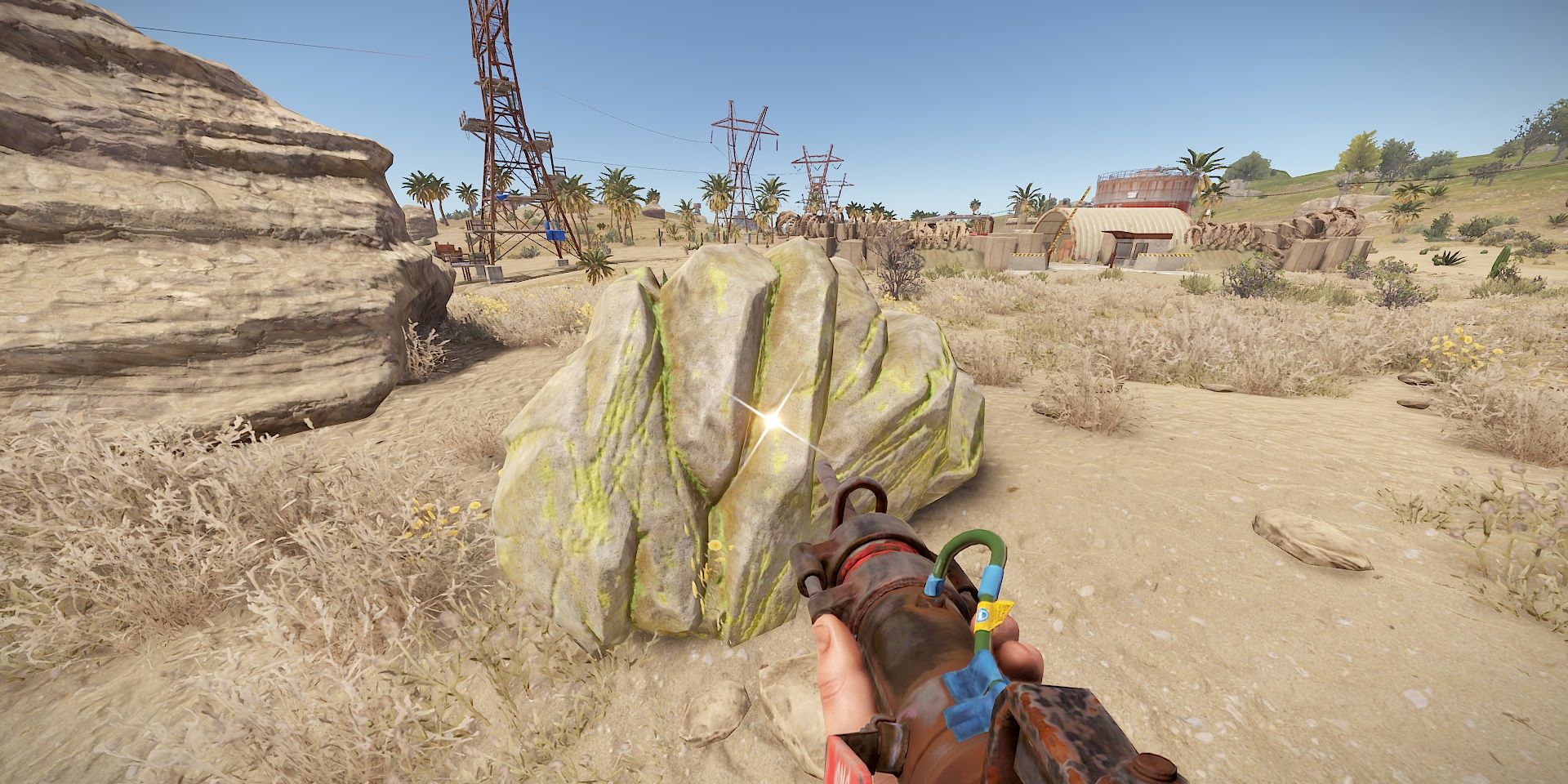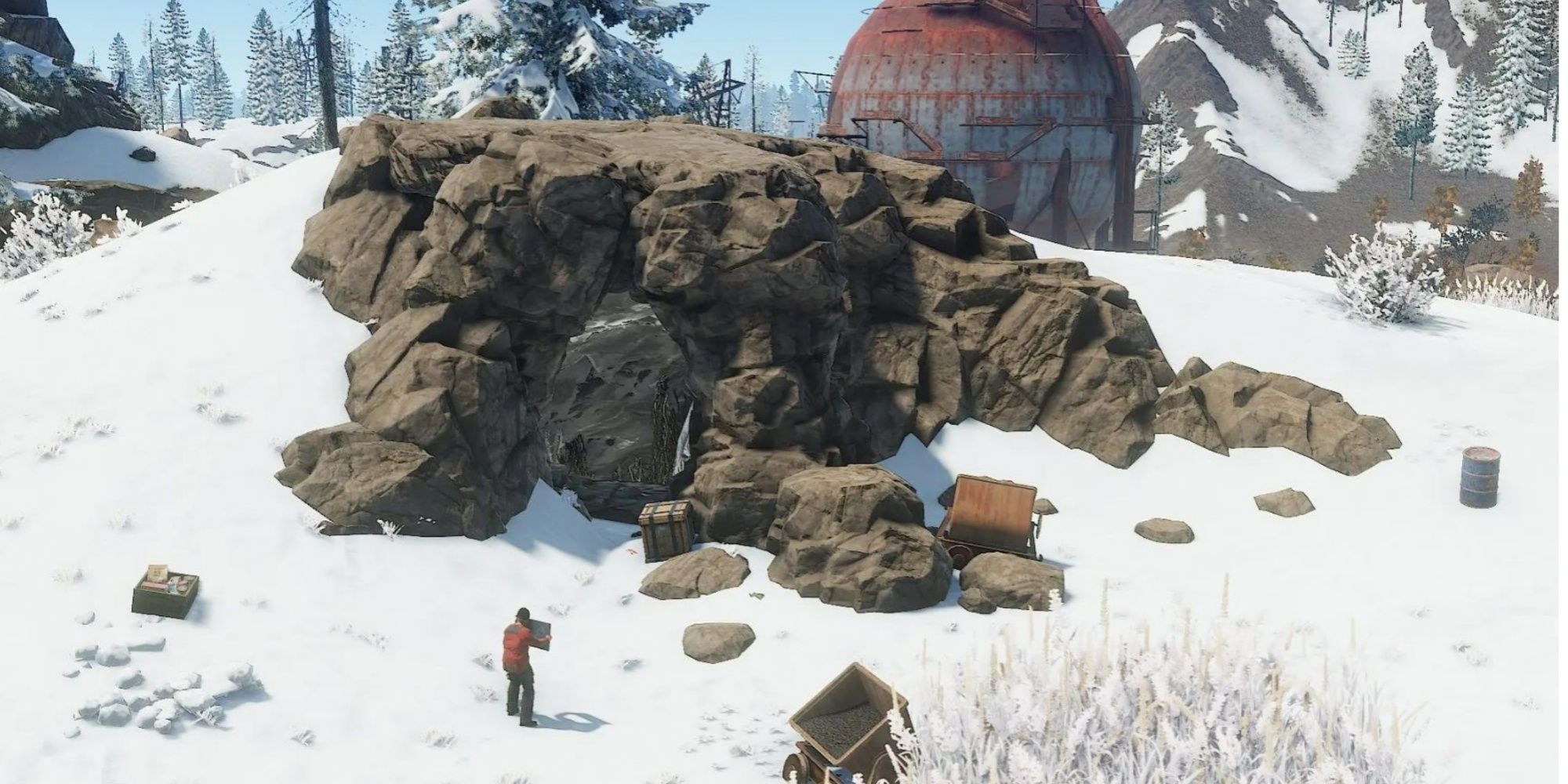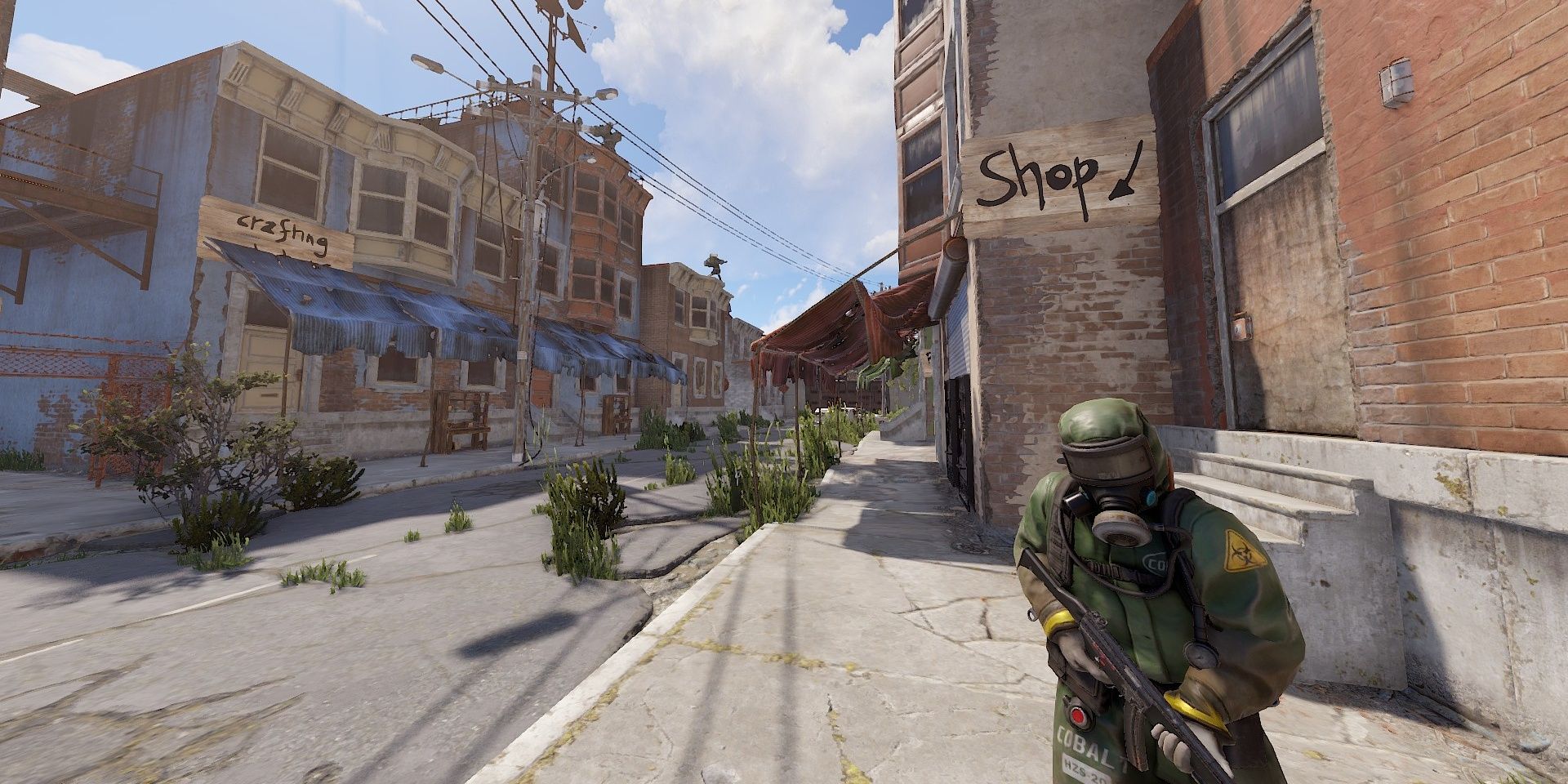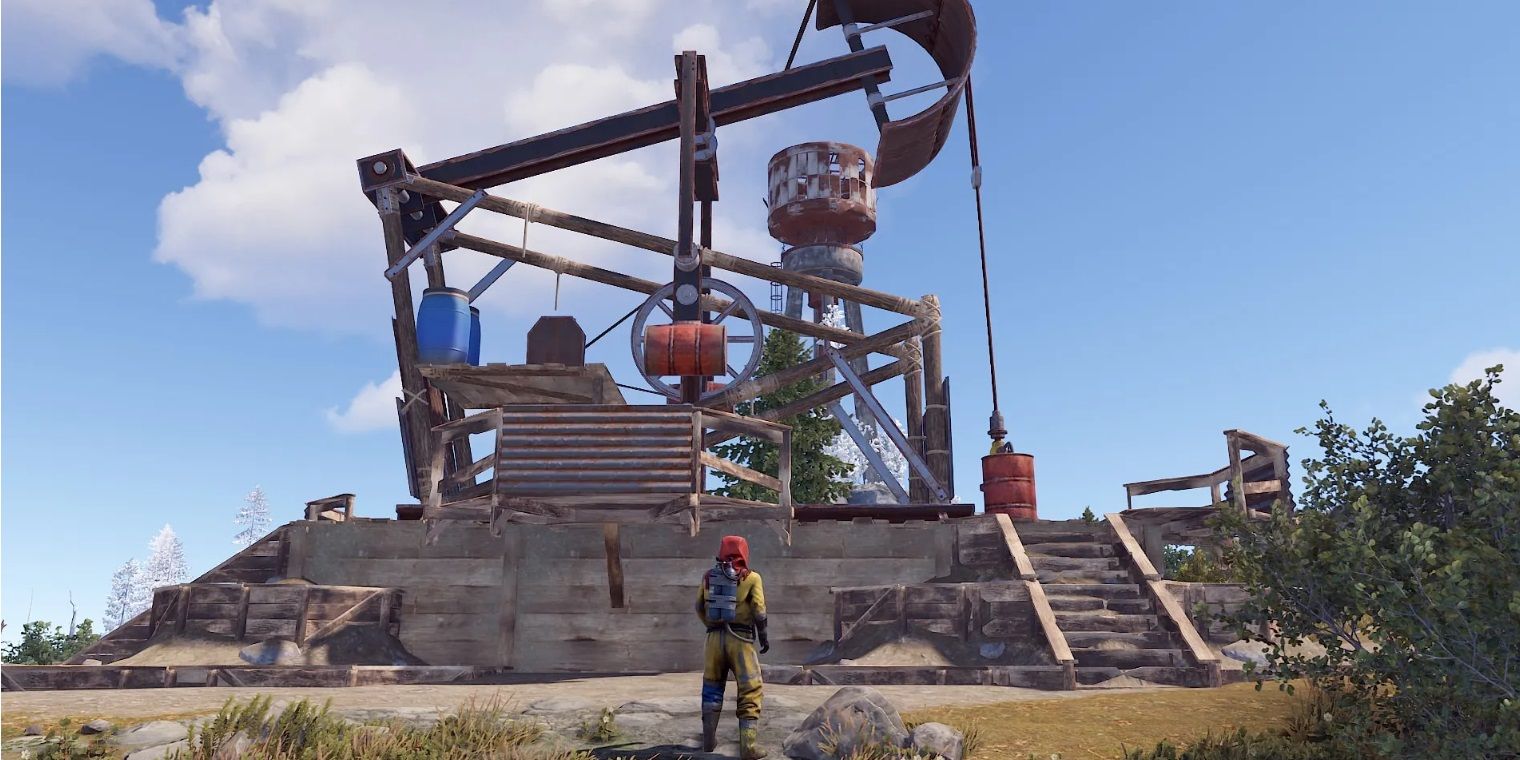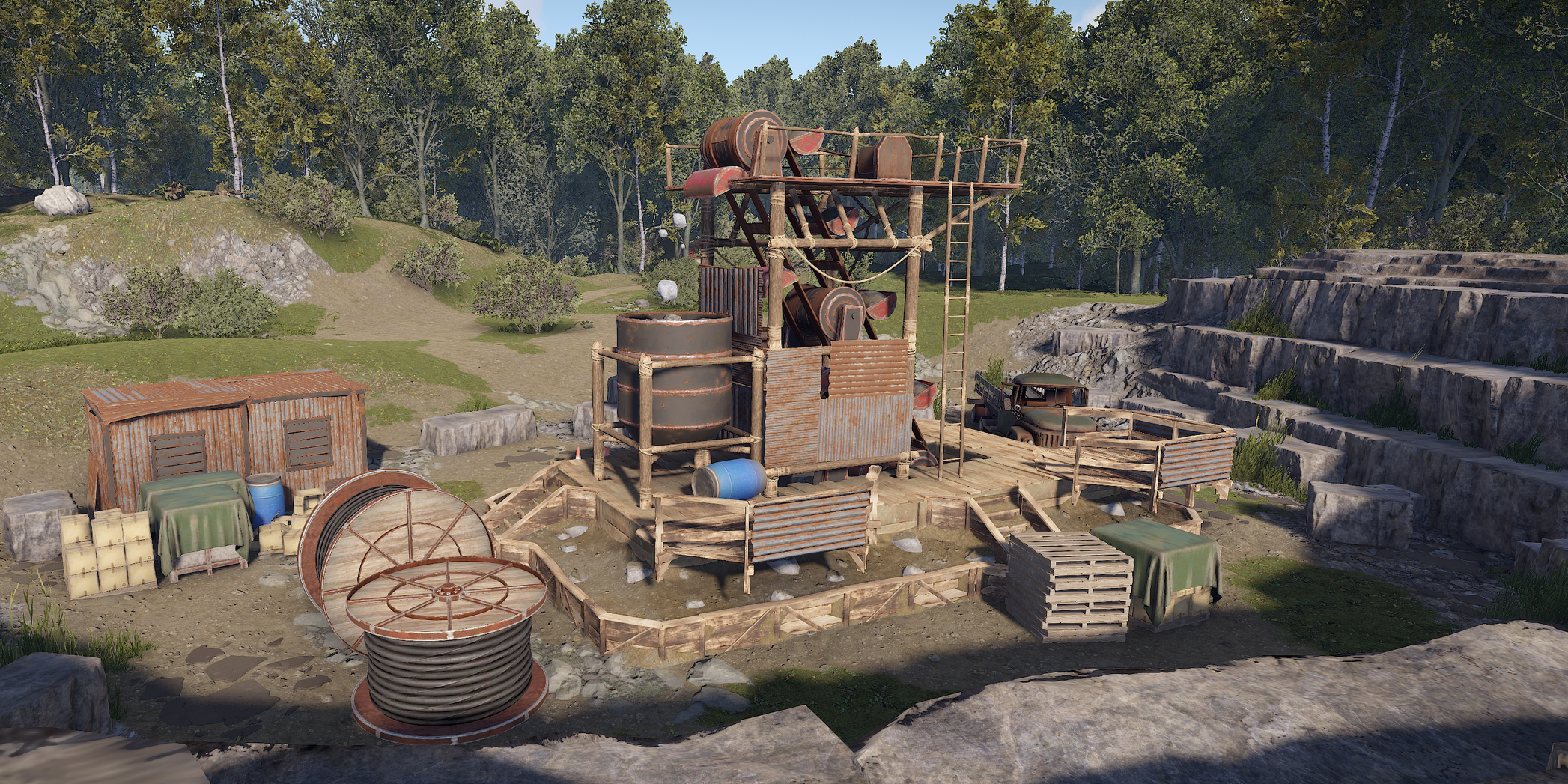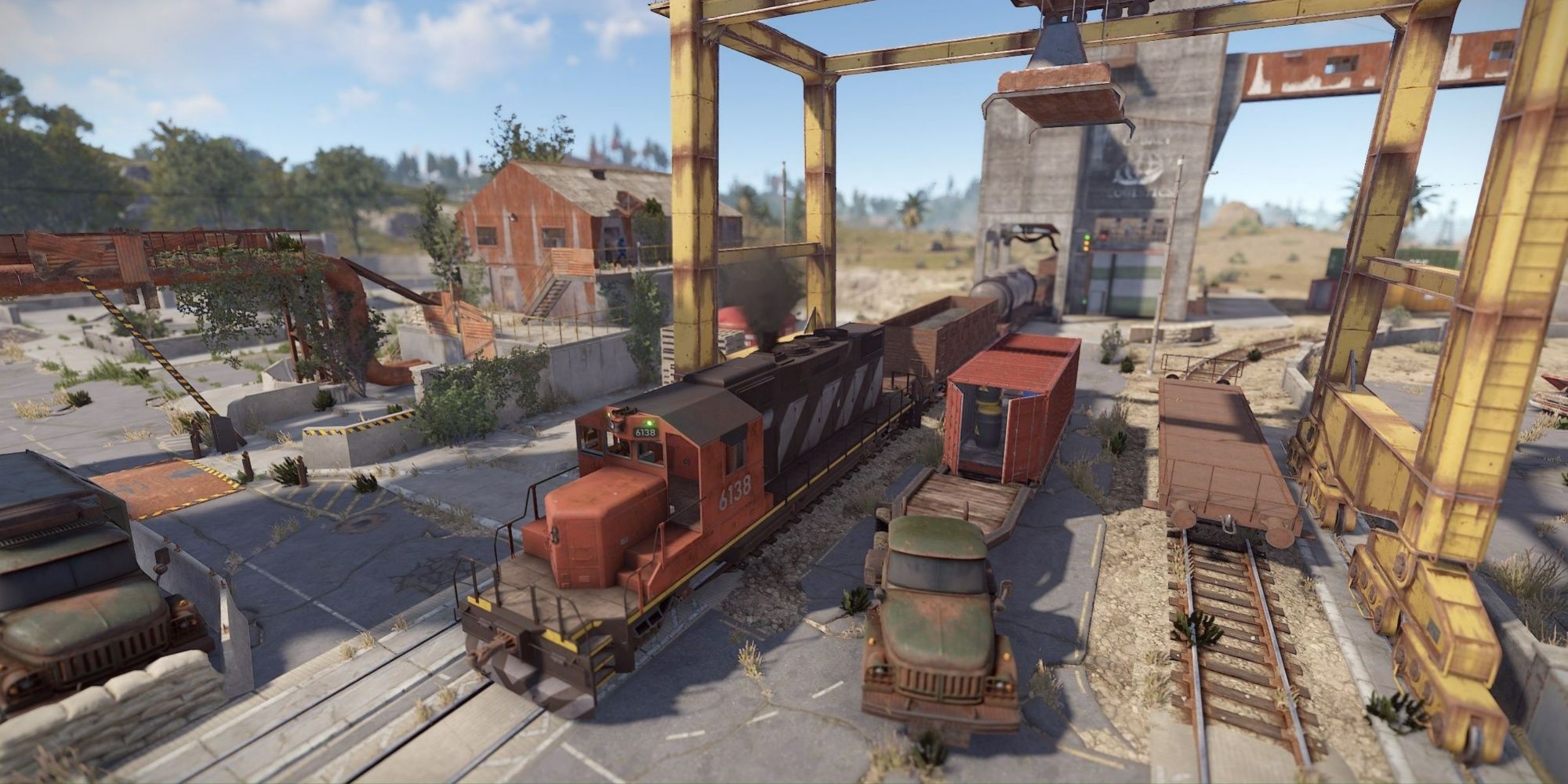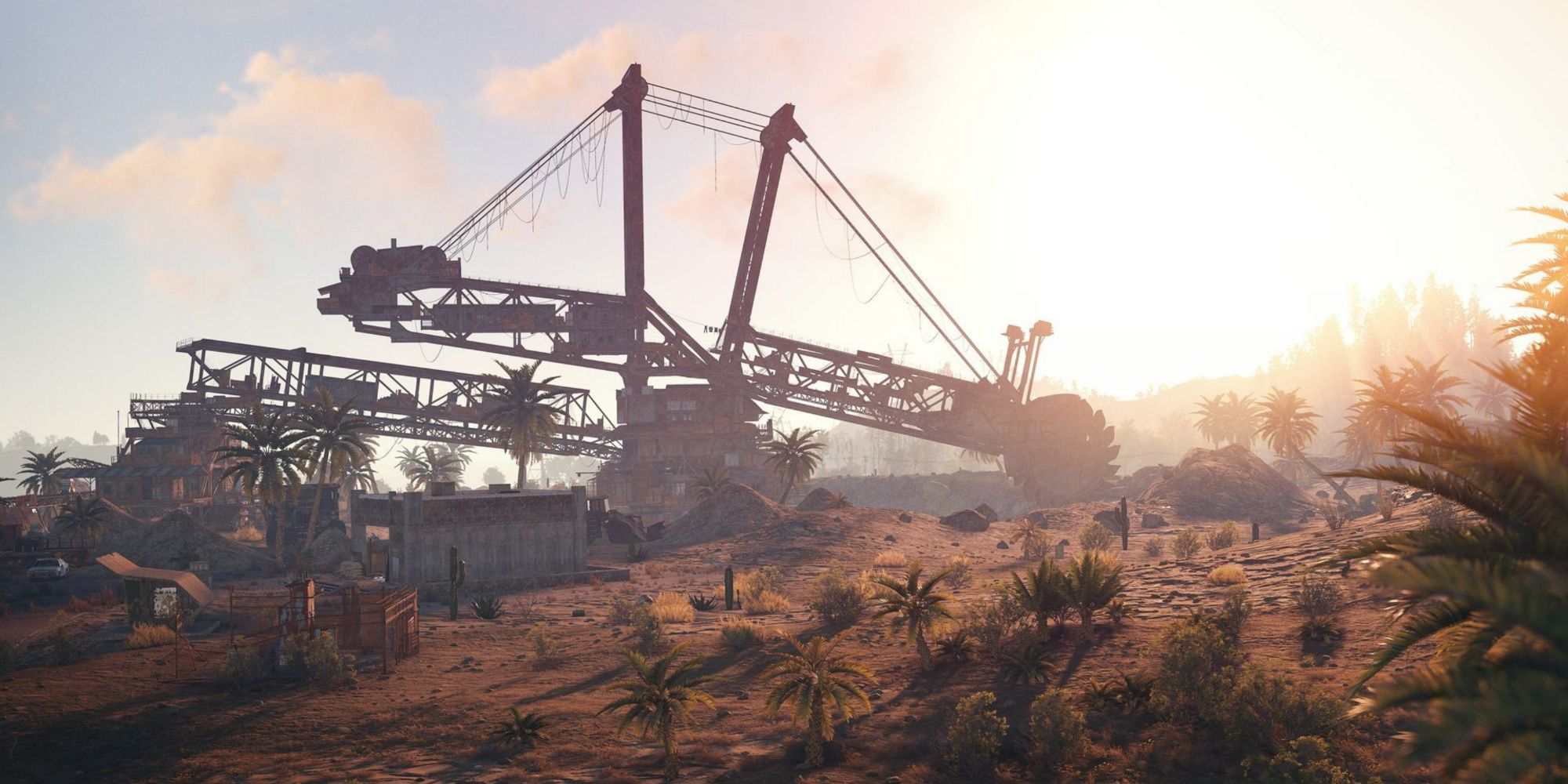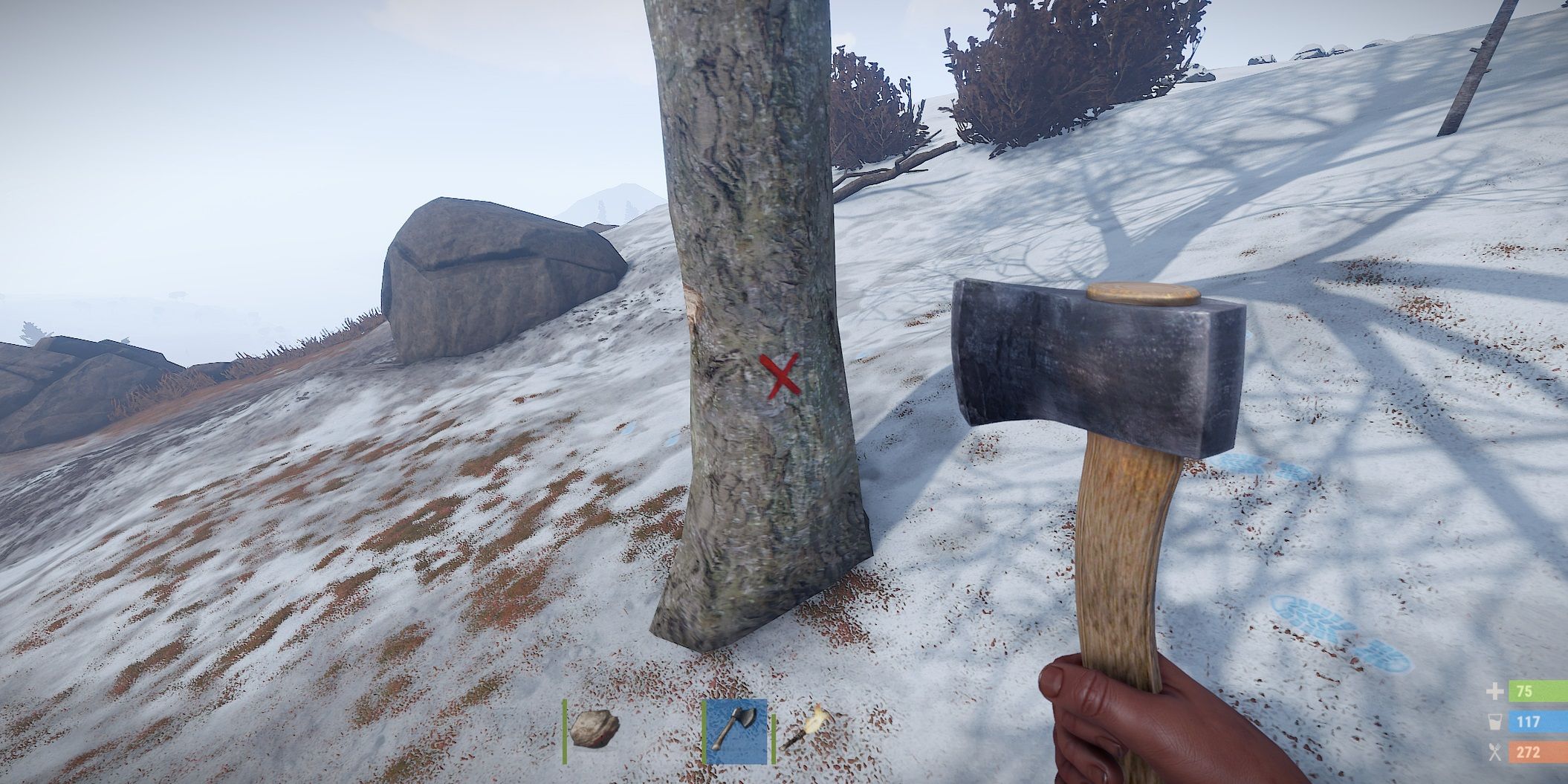In Rust's dangerous and unforgiving world, efficient resource farming is essential to players' survival. Stone, wood, metal, and other valuable materials are the core of Rust's gameplay, empowering players to build bases and craft tools and weapons. In Rust's expansive open world, these materials can be difficult to find if players don't know where to look.
While Rust has a procedural map, which ensures a randomized topography for each session, there are set locations that players can rely on for a quick and successful start to the wipe. Knowing the top spots to find and gather resources, including the fastest and safest, can give players a massive advantage and ensure they thrive in Rust.
9 The Snow Biome
The lowest-risk locations for farming resources are those away from rival players. The Snow Biome's harsh conditions often lead to low player density, which means the area is home to many unharvested stone, metal, and sulfur nodes that yield essential resources required for building and crafting. Not only does the snowy region provide the opportunity for uninterrupted farming, but the ore nodes are also easier to spot against the white terrain.
The Snow Biome is resource-rich and secluded for a reason; its freezing temperatures demand that players wear adequate armor and prepare in advance to make it back with their loot and lives intact.
8 The Desert Biome
The Desert Biome is notable for its abundance of sulfur nodes that players can mine for sulfur ore, which is vital for crafting gunpowder for explosives and ammunition. Scouring this sandy terrain can provide players with an advantage when it comes to raiding bases or combat. The surrounding cactus plants also act as a food source and provide cloth for crafting handy items like bandages or sleeping bags.
While it is more accommodating than the Snow Biome, the Desert presents unique challenges. Players should prepare for intense temperatures and the potential of encountering large groups also farming the Desert’s vast resources.
7 Caves
Players are not restricted to the land when looking for loot; caves are plentiful with valuable resources, especially ore nodes ripe for mining. These underground shelters also provide the bonus of concealing players from the view and earshot of other players, facilitating opportunities for stealthy farming.
At cave entrances, players can also find lootable minecarts containing tools, low-grade fuel, and other useful items, making caves valuable for players looking to optimize their resource-collection efforts. In fact, given their natural advantages and resources, caves are among the best places to build a base.
6 Outpost
The Outpost is a unique location for gathering resources since it is a dedicated safe zone and facilitates trading. This monument’s vending machines allow players to exchange resources for other materials and purchase items. It is recommended for players to trade stone for wood since farming for wood is noisier and, therefore, riskier in a brutal survival game like Rust.
With no radiation and a wealth of utilities such as recyclers and workbenches, it is a great spot for early-game progression and a haven for fresh spawns. However, players should ensure they are not marked as hostile when approaching the monument’s safe zone, as NPCs and turrets are dedicated to keeping the peace.
5 Pumpjacks
Players can find Pumpjacks near the Train Yard, Power Plant, and Water Treatment monuments. These machines extract low-grade fuel and crude oil when powered with diesel. Low-grade fuel is a critical resource in Rust, essential for crafting explosives, medical supplies, and furnaces required to smelt ore into valuable resources. Low-grade fuel is also necessary for fueling vehicles such as cars and powering items like generators, light sources, and chainsaws.
Pumpjacks are useful for Rust players who want a consistent and efficient supply of low-grade fuel; however, gamers should be cautious when operating them as their loud noise may attract unwanted attention, and they cannot be enclosed for protection.
4 Mining Quarries
There are three types of Mining Quarries in Rust; these gather either stone, sulfur ore, or high-quality metal ore. Like Pumpjacks, when powered with diesel fuel, they act as automated resource collectors, producing a much higher output and gathering speed than manual mining. To obtain enough diesel to activate the Quarries, players can trade low-grade fuel for diesel fuel at the Outpost's vending machines or loot it from high-tier monuments.
Gamers can also construct a compound and try to establish ownership of the Quarries, ensuring a passive and convenient flow of loot. The ability to build high external walls and place turrets around Quarries makes them a viable option for solo players seeking to farm resources quickly.
3 Train Yard
The Train Yard is a monument that provides a wealth of opportunities for acquiring resources. A train unloading event allows players to access the resources of train cars, which yield large quantities of ore, fuel, or loot crates. The Train Yard's puzzle and medical and military-grade containers found within the monument also offer the potential for a massive loot haul.
The Train Yard is fruitful for resources but can be lethal to the unprepared. Radiation levels vary around the monument, while NPC enemies and the site's popularity ensure players must stay vigilant when on a resource run to this hostile but lucrative area.
2 The Large Excavator
The Large Excavator monument is the most efficient but high-risk location for farming nodes. Players can activate the Excavator with diesel fuel and then operate it to amass sulfur ore, metal fragments, stone, or high-quality metal ore. The Excavator produces double the Quarries' resource yield per diesel barrel. Plenty of loot crates also spawn within the monument, making players' trips there even more worthwhile.
While the Large Excavator is ideal for resource-hungry players, it is a popular monument encumbered by radiation, hostile NPCS, and rival players. As a result, it is more viable for groups or well-prepared solo players.
1 How To Maximize Farming Potential
It is also worth noting that in Rust, the tools players use substantially influence the output and gathering rate of whatever resource they farm; for example, while the stone pickaxe yields 485 metal ore per node, the salvaged pickaxe yields 600 per node. Players should, therefore, aim to upgrade their primitive harvesting tools as quickly as possible.
Players should also strike the critical hit spots on nodes and trees to optimize their resource-gathering efforts. Consumable teas can further provide buffs to players' harvesting ventures; these can be crafted at mixing tables using scavenged berries and increase ore yield by up to 50%.
Rust is available on PC, macOS, Xbox One, and PS4.




